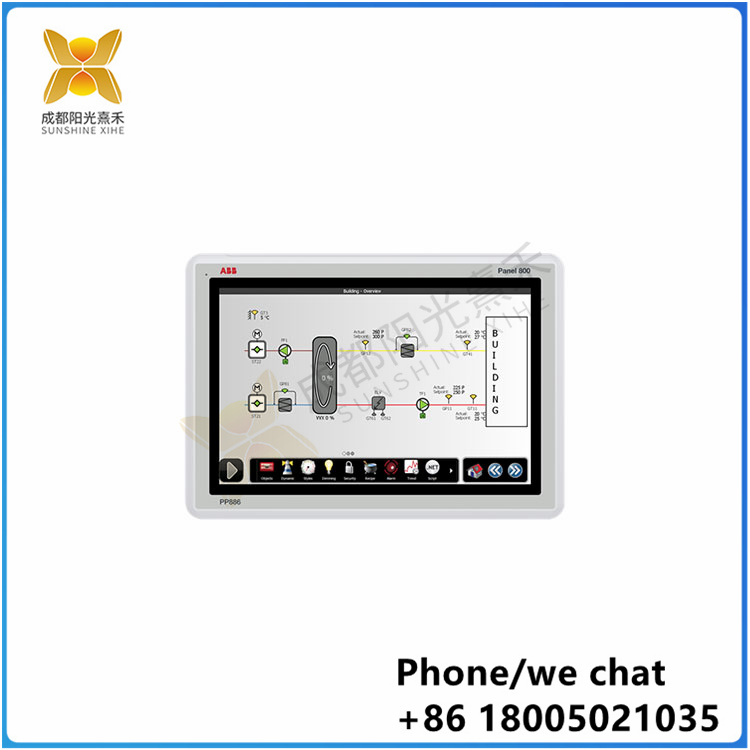The PP886 3BSE092980R1 is a standard panel produced by ABB with the following technical specifications:
Product model: 3BSE092980R1, belongs to ABB PP886 series.
Screen type: 1280×800 widescreen (16:10) display, suitable for applications requiring a wide field of view display.
Configuration requirements: Configuration is required by Panel Builder 800 Version 6.2, a panel configuration software from ABB.
Protection Suggestion: To protect the front panel, the RX886 Touch cover is recommended.
Alternative information: This model panel can replace PP885.
Product size: 410 mm width, 286 mm height and 61 mm net depth, net weight 4.15 kg.
Environmental standards: comply with the RoHS standard of EU Directive 2011/65/EU, which belongs to WEEE Category 2 and applies to electronic equipment containing screens.
Battery information: Contains a lithium-ion battery, type push-button battery, weighing 2.5g.
Customs Code: 85234925.
Operating temperature range: 0°C to +60°C, protection class IP65, suitable for use in a variety of industrial environments.

PP886 3BSE092980R1
The PP886 3BSE092980R1 panel is suitable for a variety of control system integrations, including 800xA, Compact Product Suite and Freelance systems. It features easy-to-use HMI capabilities, as well as a variety of connectivity options such as Ethernet, RS-232/422/485 and USB, making it flexible to integrate into existing or new automation projects
To configure and program the ABB PP886 3BSE092980R1 Panel, you need to use ABB’s Panel Builder 800 tool. Here are the general steps for configuration and programming:
Install the software: First, make sure you have the latest Version of Panel Builder 800 installed, as the PP886 3BSE092980R1 Panel requires Panel Builder 800 Version 6.2 or above to be configured.
Create a project: Launch the Panel Builder 800 software to create a new project or open an existing project.
Select Panel Model: Select the panel model PP886 3BSE092980R1 you want to configure in the software.
Design the user interface: Use Panel Builder 800’s drag-and-drop interface to design your user interface. You can add objects such as buttons, indicators, text labels, charts, and more.
Configuration function: Configure corresponding functions for each object on the interface, such as input and output control, data display, alarm management, etc.
Establish communication: Set communication parameters between the panel and the controller to ensure that they can exchange data correctly.
Simulation and Testing: Use simulation capabilities in Panel Builder 800 to test your design and make sure everything works as expected.
Download and deploy: After configuration and testing, download the project to the PP886 panel and deploy it in a real application.
Field commissioning: Final commissioning of the panel is performed on-site to ensure that it integrates seamlessly with the entire automation system.






